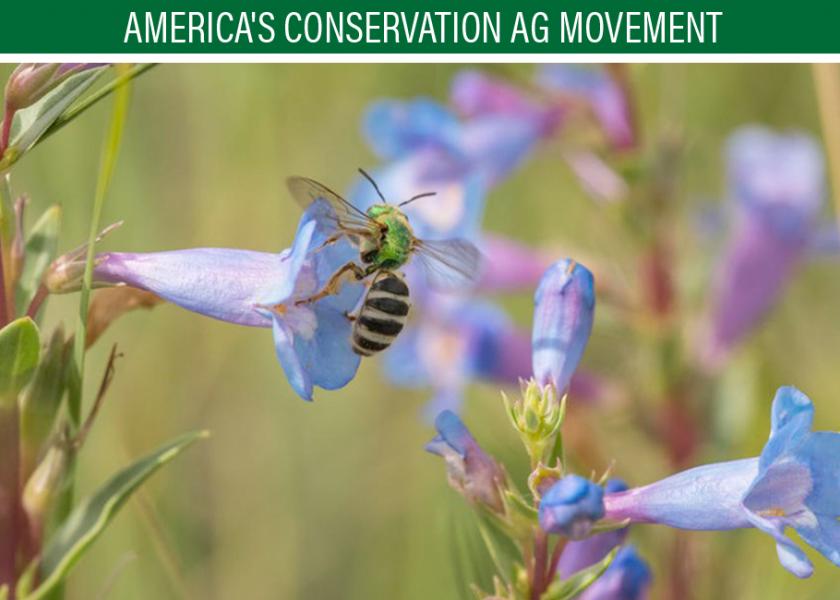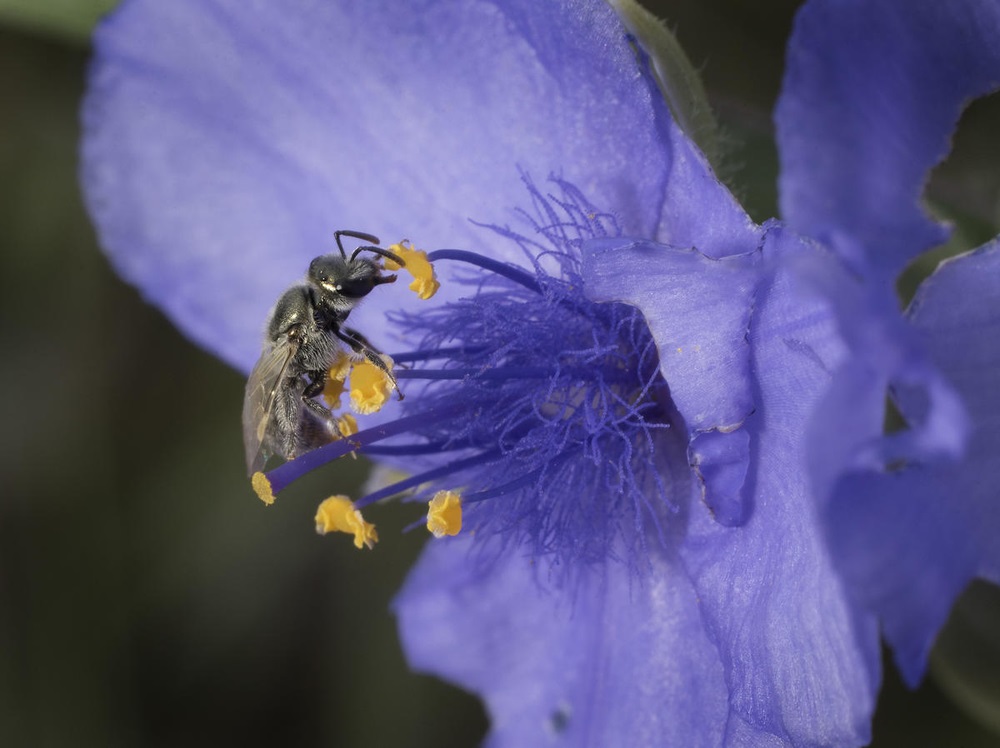Sustainable Ranching and Native Bees Pair Well

Building trust in food begins with empowering farmers through one of the largest and most diverse conservation- and sustainability-focused public-private partnerships in our nation’s history: America’s Conservation Ag Movement. To find the latest news and resources related to the Movement, visit AgWeb.com/ACAM.
Public awareness and concern for the future of bees has gone through the roof. “Save the bees” has become one of the most popular slogans of our time. Yet, while many people are familiar with the domesticated honey bee, they are also surprised to learn that we also have an abundance of wild, native species at risk of vanishing forever.
The U.S. and Canada are home to upwards of 4,000 species of bees. In a healthy ecosystem that means a lot of individual bees in the landscape. And while we are still learning about them, we do know a few key facts: for many crops, they are better pollinators than honey bees; they make honey bees better pollinators through competition; and, sadly, many of them are in serious trouble due to habitat loss, pesticides, and disease. A recent study estimated that one out of every four species of bumble bee—some of our most valuable native pollinators—are at risk of extinction.
Native bees have relatively simple needs. Their three main requirements for a healthy life are food (wildflowers), shelter (places to nest), and a pesticide-free environment. Some of the very best places for North American native bees to thrive are sustainably managed working lands.

Well-managed grasslands, where cattle graze in harmony with the natural environment, keep woody vegetation like juniper trees at bay and make space for wildflowers to flourish. Cattle hooves break through the hard soil allowing water to seep into the ground, providing plants with plenty of moisture and opportunities to reseed.
In recent years, ranching has been targeted as a source of environmental degradation around the world. While it’s true that in some places beef production can harm sensitive ecosystems, in the Northern Great Plains cattle are a key component in the strategy to keep it healthy. Today, many ranchers are applying grazing methods that ensure that the land remains resilient, allowing wildlife communities to thrive.
In contrast, grasslands that have been plowed up for row-crops such as corn, soy, and wheat offer little to no food or shelter for bees. Even monoculture crops that offer a limited supply of food during the blooming period don’t produce food for bees before or after this brief window of time, essentially becoming a food desert for pollinators. Like us, they need a well-balanced diet from spring through late fall to survive.
It is time for the public to recognize that our native grasslands require sustainable habitat management, which in the case of grasslands, includes ranching. If you love bumble bees and other native bee species, take a moment to thank a rancher. They may be one of the last, best defenses we have for protecting these amazing creatures.
Article and photos by Clay Bolt, World Wildlife Fund, Northern Great Plains Program.
Ag Retailers and Conservation: Can They Work Together?
Screenhouses Boost Marketable Yields for Farmers
Hungry Harvest maintains new sustainable practices during pandemic







